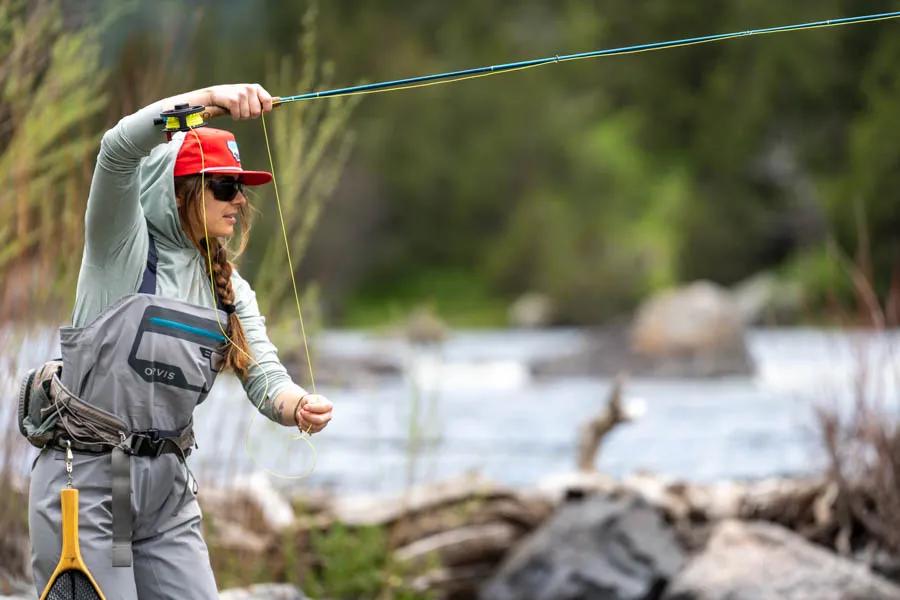
In Montana we’ve got big rivers, small rivers, spring creeks, lakes, and a lot of other nooks and crannies where fish can swim. Montana is nearly 600 miles wide and over 300 miles tall. Is it possible that one fly fishing rod exists to fish all the great fly-fishing waters in Montana? Absolutely.
And, that rod is a 5-weight fly fishing rod. Here’s why a 5-weight fly fishing rod works just as well on the trout-packed Missouri River as it does when stalking sipping trout on the Paradise Valley Spring Creeks as it does in the wind of the Madison River’s 50-mile riffle.

A Four-Weight is Too Small
Since we’re talking about one rod to do it all—the true workhorse rod for Montana’s best fly-fishing waters—you will need a rod that is not under-gunned or over-matched. The other possible choices could be a four- or a six weight. A four-weight rod can do great casting single dry fly mayflies on the cutthroat waters in and around Yellowstone National Park, and might be the first choice to do so, but if the oh-so-frequent southerly or westerly winds kick up, turning over a 12-foot 5X leader with a four weight is as hard as getting a chicken sandwich at In-and-Out Burger.
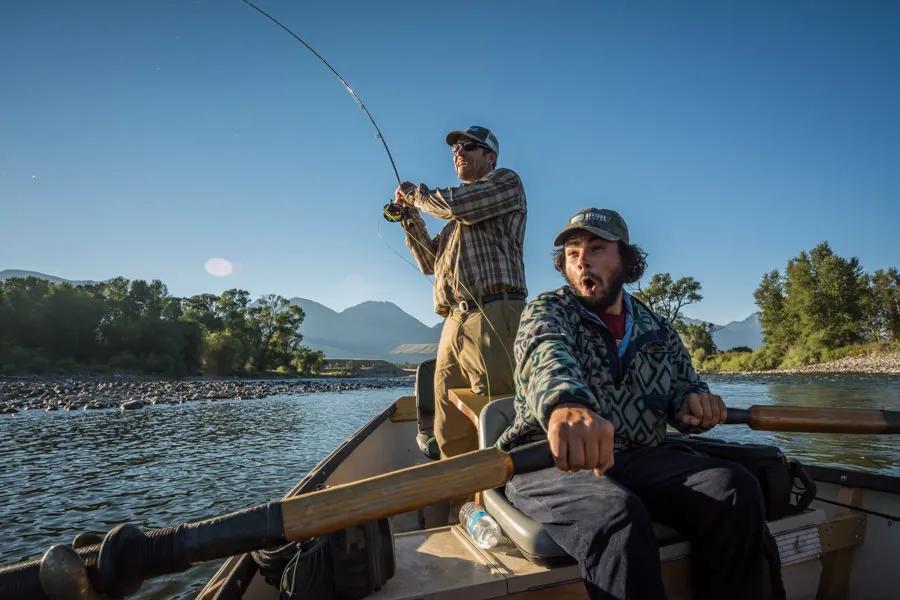
A Six Weight is Too Big
If you are on a larger river like the Yellowstone or Madison, a four-weight might work for fishing dry flies, but if the fish cease their surface feeding, and you must fish weighted nymphs or streamers, using a four-weight shifts from fun to work. It is time to go to a heavier rod. On many rivers a six-weight is a good choice for a double-nymph rig or for dragging streamers. But if winds calm down, insects start to hatch, trout begin feeding on the surface, and it’s time to fish single dries to rising trout, a six weight is like trying to park a Suburban in Manhattan—doable, but it’s never as easy as you think, and you wish you went smaller.

A Five-Weight is Just Right
If a four-weight can’t handle the wind but a six-weight doesn’t offer enough flexibility, a five-weight rises to the top of the list for the all-around fly-fishing rod for Montana’s waters. When we asked our long-time Montana fly fishing guides their favorite rod weight, the consensus is always that a 9-foot long 5-weight gets the job done more than any other rod. This is because nearly all fly fishing in Montana is for trout and most trout fishing occurs with floating lines and flies ranging from size 4 to size 24. These are the ideal parameters for using a 5-weight fly rod when fly fishing in Montana.
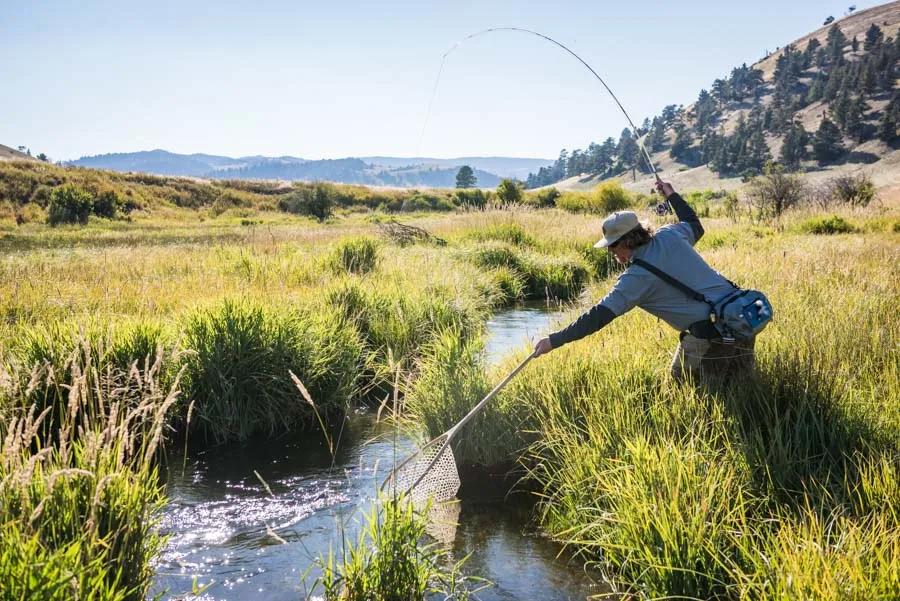
What About Length?
Like the rivers and creeks in Montana, fly rods also come in many lengths and sizes. Fly rods range from 7 to 12 feet long. From overnight camping and floating trips on the Smith River to fishing Slough Creek in Yellowstone National Park, a 9-foot long 5-weight is the clear rod of choice. A rod that is 9 foot long allows for maximum mending efficiency yet can also be sensitive enough for good mending and effective hook set. Plus, if you spend anytime floating rivers and fishing, a 9-foot-long fly-fishing rod is ideal.
If you plan to fish double-nymph rigs or streamers, using a 9-foot-long fly rod is less of a chore than using a shorter rod. However, longer fly rods can offer less sensitivity for smaller waters. When using small flies and light tippets, like on a spring creek or in late summer when clear and low water conditions are the norm, a 9-foot rod can be a little long, but choosing a 5-weight is a nice compromise.
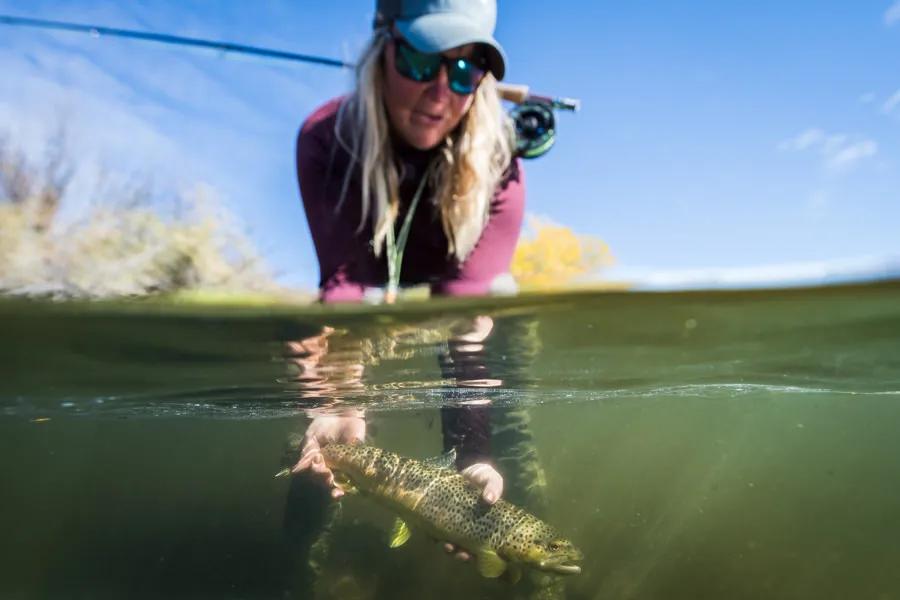
Lastly, a Five- Weight Offers Diverse Actions
All rods have some sort of “action.” The action of a rod is described as how it flexes when it is cast or when a fish is hooked. It is possible that slow-action rods may struggle in heavy wind or be outmatched for double nymph rigs. But a rod that is too fast or too stiff can make casting feel more like work than enjoyment or effectiveness. Ultimately you will likely choose a rod with a medium or medium-fast action because they offer the widest range of casting ease and fish sensitivity. Having a road that can be as versatile as possible is important if you’re learning to cast or if you might pass-down the fishing rod to someone new to fly fishing. To be used in the most situations, sensitivity is crucial to protect light tippets. Sensitivity is the ability to feel the entire flex of the rod while mending, but it is also very important to more efficiently fight fish quickly.
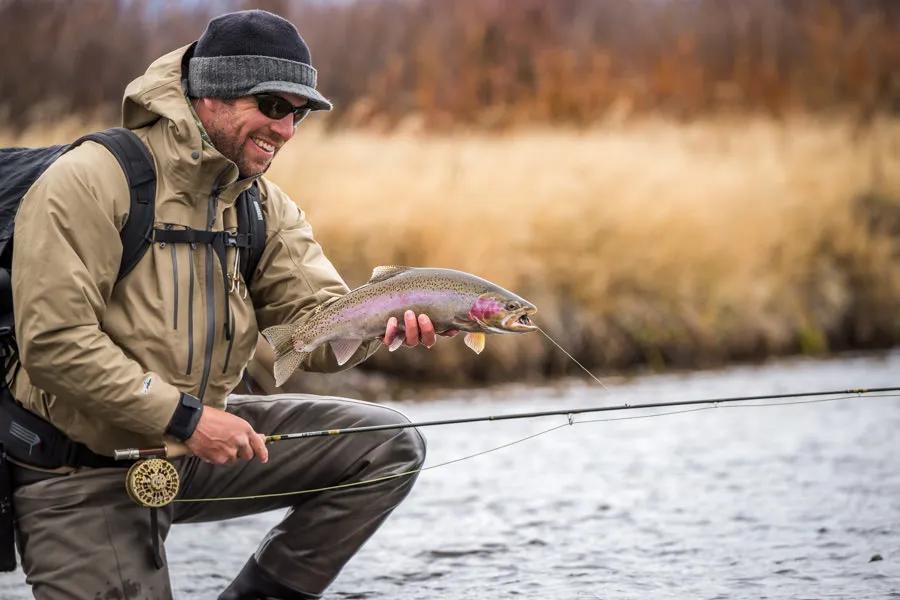
The appeal of fly fishing is that there’s always something for everyone, regardless of skill level. Whether you desire fishing dry flies to rising trout, prospecting with a grasshopper pattern, or trying to catch as many fish as easily as possible with tandem nymph rigs, there really is something for every personality in fly fishing. But the reality is you still need the proper tools to get it done. Over the several decades our Montana fly fishing guides have been fishing the waters of Montana, the consensus is clear—no matter how you want to fly fish for trout in Montana, it is a very good idea to have a 9-foot 5-weight ready to go.
